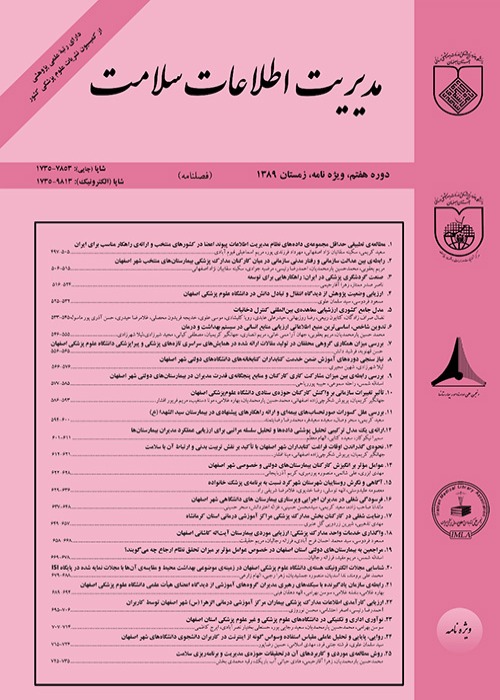The rate of Media and Information Literacy among Isfahan University of Medical Science's Students Using Global Framework on MIL Indicators
Information and media literacy (MIL) enables people to interpret and make informed judgments as users of information and media, as well as to become skillful creators and producers of information and media messages in their own right. The purpose of this research was to determine the rate of media and information literacy among Isfahan University of Medical Science's students using Global Framework on MIL Indicators.
This is an applied analytical survey research in which the data were collected by a researcher made questionnaire. This questionnaire was provided based on specialist's viewpoints and valid scientific works. Its validity and reliability were confirmed by Library and Information Sciences specialists and Chronbach's alpha (r=0.75) respectively. Statistical population consisted of all students in Isfahan University of Medical Sciences and the samples were 375. Sampling method was random stratified sampling. Data were analyzed by descriptive and inferential statistics (Indepemdent T-test and ANOVA).
The findings showed that the mean level of media and information literacy among Isfahan University of Medical Science's students was 3.86±0.338 (higher than average). The highest mean were “valuing other people's scientific output” with 4.40±0.775 and the lowest mean were “transmission of information through formal presentations” with 3.15±1.23. The mean of “observance copyright”dimension was more than others with 4.22±0.466 and the lowest mean was “exchange of information” dimension with 3.62±0.744. Comparison between gender and married status and the rate of media and information literacy among Isfahan University of Medical Science's students showed no significant difference, but there was significant difference between educational degree and rate of media and information literacy.
The results showed that the rate of media and information literacy among Isfahan University of Medical Science's students was higher than average. But students didnt have enough ability in transmission of information through formal presentations, presentation of scientific knowledge in written formats as well as start a new activity with little information. In general, all students and education practitioners should pay special attention to factors affecting in improving media and information literacy as a main capability in using printed and electronic media.
- حق عضویت دریافتی صرف حمایت از نشریات عضو و نگهداری، تکمیل و توسعه مگیران میشود.
- پرداخت حق اشتراک و دانلود مقالات اجازه بازنشر آن در سایر رسانههای چاپی و دیجیتال را به کاربر نمیدهد.


